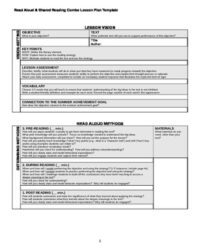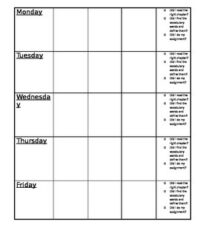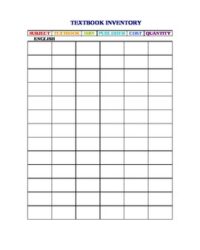There’s something truly magical about a well-read story, isn’t there? When a book comes alive in the hands of a skilled storyteller, it transcends simple words on a page and becomes an experience. For educators, leveraging this magic through read alouds is a cornerstone of literacy development. But how do you turn a simple reading session into an engaging, dynamic learning opportunity that captivates every student?
The answer lies in making it interactive. It’s about more than just reading; it’s about inviting students into the story, encouraging them to think, question, and connect. This is where an interactive read aloud lesson plan template becomes an invaluable tool. It provides the framework you need to transform passive listening into active participation, ensuring that every read aloud session is not only enjoyable but also packed with meaningful learning.
Unlocking Learning with Interactive Read Alouds
Interactive read alouds are powerful because they do so much more than just expose children to literature. They build vocabulary, foster comprehension strategies, develop critical thinking skills, and cultivate a love for reading. By thoughtfully planning your read alouds, you can guide students through rich discussions, help them make connections to their own lives and the world around them, and deepen their understanding of complex themes and characters. It’s an opportunity to model fluent reading, demonstrate metacognitive strategies, and show children how readers truly interact with text.
Beyond academic benefits, interactive read alouds create a shared communal experience in the classroom. They foster a sense of belonging and provide a safe space for students to explore emotions, perspectives, and ideas. When students are actively engaged, asking questions, sharing predictions, and discussing their thoughts, the read aloud becomes a vibrant dialogue rather than a monologue. This engagement ensures that the learning sticks, making the read aloud a highly effective instructional strategy for all ages.
Key Elements of a Truly Engaging Read Aloud
- Strategic Book Selection: Choose books that are rich in language, have engaging storylines, and offer opportunities for deep discussion. Consider diverse voices and experiences.
- Pre-Reading Engagement: Activate prior knowledge, introduce key vocabulary, and set a purpose for reading to pique student interest.
- During Reading Interaction: Pause at strategic points for “think-alouds,” ask open-ended questions, encourage predictions, and allow students to turn and talk.
- Post-Reading Reflection: Facilitate discussion, connect to themes, engage in extension activities (e.g., writing, art, drama), and encourage personal responses.
- Modeling and Scaffolding: Show students how expert readers think and interact with text, providing support as they develop their own comprehension strategies.
Having a structured approach, like an interactive read aloud lesson plan template, streamlines your preparation and ensures you hit all the critical components. It takes the guesswork out of planning and allows you to focus on the art of delivery. Instead of starting from scratch each time, you have a clear roadmap that guides your choices, from selecting the right stopping points to crafting effective questions.
Designing Your Perfect Interactive Read Aloud Lesson Plan
Crafting an effective interactive read aloud lesson plan doesn’t have to be daunting, especially when you have a solid template to work with. Think of your interactive read aloud lesson plan template as your blueprint for success. It should prompt you to consider the “why” behind your book choice, the specific learning objectives you want to target, and the best ways to engage your students before, during, and after the reading. This detailed planning ensures that every read aloud session is purposeful and yields maximum educational impact, moving beyond just entertainment to genuine learning.
The beauty of a template is its adaptability. While it provides structure, it also allows for immense creativity. You can tailor each section to fit the specific book, the age group of your students, and your current curriculum goals. For instance, a template might include sections for “Vocabulary to Pre-teach,” “Prediction Prompts,” “Turn-and-Talk Opportunities,” and “Extension Activities.” This level of detail helps you anticipate student responses and prepare for meaningful interactions.
- Choose a book with compelling characters and a storyline that resonates with your students.
- Identify 3-5 key vocabulary words to introduce before reading.
- Determine 2-3 strategic stopping points for discussion and questions during the read aloud.
- Craft open-ended questions that encourage critical thinking, not just recall.
- Plan a quick post-reading activity that reinforces the lesson’s objective.
- Consider how you will differentiate for diverse learners within the same read aloud.
Remember, the goal is to make reading a dynamic and participatory experience. By consistently using an interactive read aloud lesson plan template, you’ll find that your confidence grows, your planning becomes more efficient, and most importantly, your students’ engagement and comprehension will soar. It’s about building a community of readers who are excited to delve into stories and discover new worlds through books.
Embracing the power of interactive read alouds in your classroom is one of the most rewarding instructional strategies you can adopt. It’s a holistic approach that nurtures not just literacy skills, but also social-emotional growth and a deep appreciation for stories. With the right planning tools, you can consistently deliver captivating read alouds that leave a lasting impression on your students, making every book an adventure they won’t soon forget.
Ultimately, providing students with rich, interactive reading experiences fosters lifelong learners and passionate readers. By leveraging a well-designed framework, you’re not just reading a book aloud; you’re building foundational literacy skills, sparking curiosity, and creating treasured memories of shared literary journeys. It’s about empowering every child to see themselves as a reader and a critical thinker, ready to engage with the world of words.


